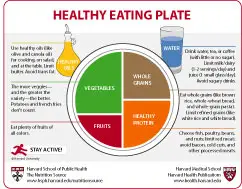It’s election time in both Canada and the United States. Much has been discussed about the election platforms of every political party on both sides of the border: Military spending and the war in Iraq and Afghanistan; unemployment, the deficit, and ways to stimulate the economy; environmental initiatives; tax reduction; and health-care spending…
In the discussions on health care spending, I seldom hear anything mentioned about disease prevention and the incredible savings in our health-care spending that can result. But in order to realize these savings, we need a national strategy for fitness.
The strategy must be comprehensive with the goal of establishing a national identity that includes fitness, health and physical competence. This identity must begin with our youngest of school children and sustain them throughout their adult years. National funds must be set aside to enable our states and provinces and local school boards to provide quality daily physical education led by competent instructors who will instill a love of physical activity and fitness and provide the knowledge and physical tools to enable every student to enjoy a lifelong, healthy lifestyle.
Our national identities must become tied in with fitness. It must become our national duty to become fit and healthy, not only because it will save money, but because that’s what Canadians and Americans are…fit, healthy, physical people! The strategy must also include elite athletes, who provide the role models and inspiration for the millions of youngsters who follow their exploits.
Our national leaders must realize that any investment in the promotion of physical fitness has a huge payoff – not only will it provide a happier, more productive populace, it’s an investment that will realize huge long-term savings from our health-care expenditures.
How much can a national fitness strategy save? The potential is huge. A 2004 study at Queens University in Kingston Ontario, determined that the economic burden of physical activity and obesity in Canada represented $3.2 billion in direct costs and $6.4 billion and indirect costs – a total of $9.6 billion every year! An American study determined that the total costs from obesity alone, in 1995, was $99.2 billion! These are costs that can be greatly reduced simply by getting people moving. Is there an easier, more beneficial way to cut the deficit? Is there another way to cut the deficit that actually leaves people better off afterwards? It’s such a win-win situation, that I find it incredible that every political party hasn’t embraced it.
Voters, when you are speaking with your local political candidates, ask them about their party’s national fitness strategy. Do they have one, what is it, and if they don’t, do they they realize the benefits? It’s time to lobby for what WE all know is the right thing to do.
References:
1. Peter T. Katzmarzyk, and Ian Janssen, “The Economic costs associated with physical inactivity and obesity in Canada: An Update.” Canadian Journal of Applied Physiology, 2004 Apr;29(2):90-115.
2. A.M. Wolf and G.A. Colditz, “Current estimates of the economic cost of obesity in the United States, Obesity Research, March 1998.
Dick Moss, Editor,
PE Update.com
To subscribe to the free PE Tips of the Week Newsletter, Click Here!
To check out the PE Update.com website, Click Here!
[tags]fitness,strategy,election, politicians,physical education,school,sports[/tags]











